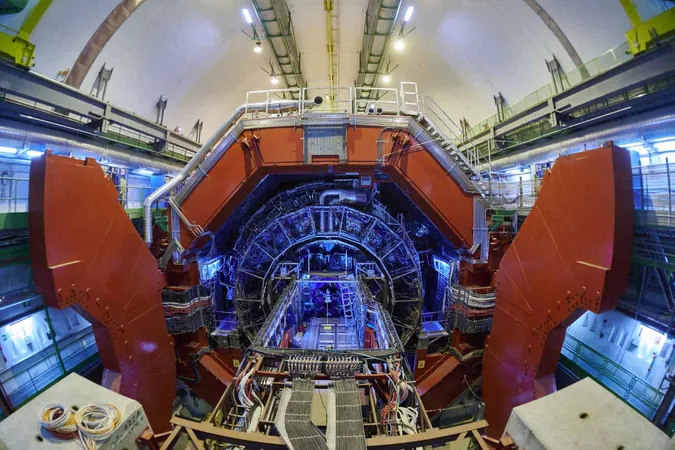
CERN's LHC Pulls Off a Modern Alchemy: Turning Lead into Gold—If Only for a Moment!
2025-05-11
Author: Nur
Alchemy Meets Modern Science!
In a groundbreaking discovery that has reignited the age-old dream of alchemists, CERN's Large Hadron Collider (LHC) has momentarily transformed lead into gold. This unexpected achievement was confirmed through recent experiments conducted with the ALICE detector, bringing a fantastical idea into the realm of modern physics.
The Long Search for Chrysopoeia
Historically dismissed as mere myth, the art of chrysopoeia—the transformation of base metals into gold—was once considered impossible until the advent of 20th-century nuclear physics. While earlier explorations had experimented with radioactive decay and particle bombardments to create gold, these methods had their limits.
A Novel Approach to Transmutation
Now, the ALICE team's latest findings have introduced a novel approach. By examining near-miss collisions of lead nuclei, researchers achieved the fleeting transformation of lead into gold, albeit on a minuscule scale.
The LHC: A Cosmic Time Machine
The LHC mimics the cataclysmic conditions of the universe’s birth—the Big Bang. By colliding lead nuclei at almost the speed of light, it creates a hot quark-gluon plasma—a state of matter that existed just moments after the universe's creation. Most collisions are merely close calls, but they generate intense interactions between photons and nuclei.
How Does It Work?
In these collisions, lead nuclei, each made up of 82 protons, distort under immense electromagnetic fields. This acceleration leads to photon emissions that can disturb nuclei enough to eject protons and neutrons. Remove just three protons from lead, and voilà—you get gold, which has only 79 protons!
The Role of Advanced Technology
A crucial tool in this research, the zero-degree calorimeters (ZDC), measures the outcomes of photon-nuclear interactions. These measurements allow scientists to quantify how many protons are ejected in each collision, revealing the creation of elements from thallium to gold. The ALICE team's analysis showed that while thallium and mercury were more commonly produced, the LHC managed to create up to 89,000 gold nuclei per second!
But Don’t Get Too Excited!
However, before you rush to your jeweler, it’s important to note that this form of gold doesn’t last long. The generated gold nuclei are highly unstable and decay in mere fractions of a second upon hitting the LHC's walls or the ZDC, breaking down into smaller particles.
The Statistics Behind Gold Production
Between 2015 and 2018, the ALICE collaboration estimated that about 86 billion gold nuclei were produced during their experiments. This staggering number, however, only amounts to a paltry 29 trillionths of a gram—not nearly enough to mold even a tiny piece of jewelry.
Insights for Future Research
Despite the minuscule amount of gold created, the findings are significant. The ability to detect gold production at the LHC brings a fresh perspective to theoretical models of electromagnetic dissociation, which are crucial for improving future collider performance.
A Step into the Future of Physics
As researchers continue to unravel the mysteries of nuclear physics, this fleeting glimpse of alchemical success serves as a thrilling reminder of the potential still waiting to be uncovered in the realms of science. Could the dreams of medieval alchemists finally be within our grasp, albeit in the tiniest of quantities?

 Brasil (PT)
Brasil (PT)
 Canada (EN)
Canada (EN)
 Chile (ES)
Chile (ES)
 Česko (CS)
Česko (CS)
 대한민국 (KO)
대한민국 (KO)
 España (ES)
España (ES)
 France (FR)
France (FR)
 Hong Kong (EN)
Hong Kong (EN)
 Italia (IT)
Italia (IT)
 日本 (JA)
日本 (JA)
 Magyarország (HU)
Magyarország (HU)
 Norge (NO)
Norge (NO)
 Polska (PL)
Polska (PL)
 Schweiz (DE)
Schweiz (DE)
 Singapore (EN)
Singapore (EN)
 Sverige (SV)
Sverige (SV)
 Suomi (FI)
Suomi (FI)
 Türkiye (TR)
Türkiye (TR)
 الإمارات العربية المتحدة (AR)
الإمارات العربية المتحدة (AR)